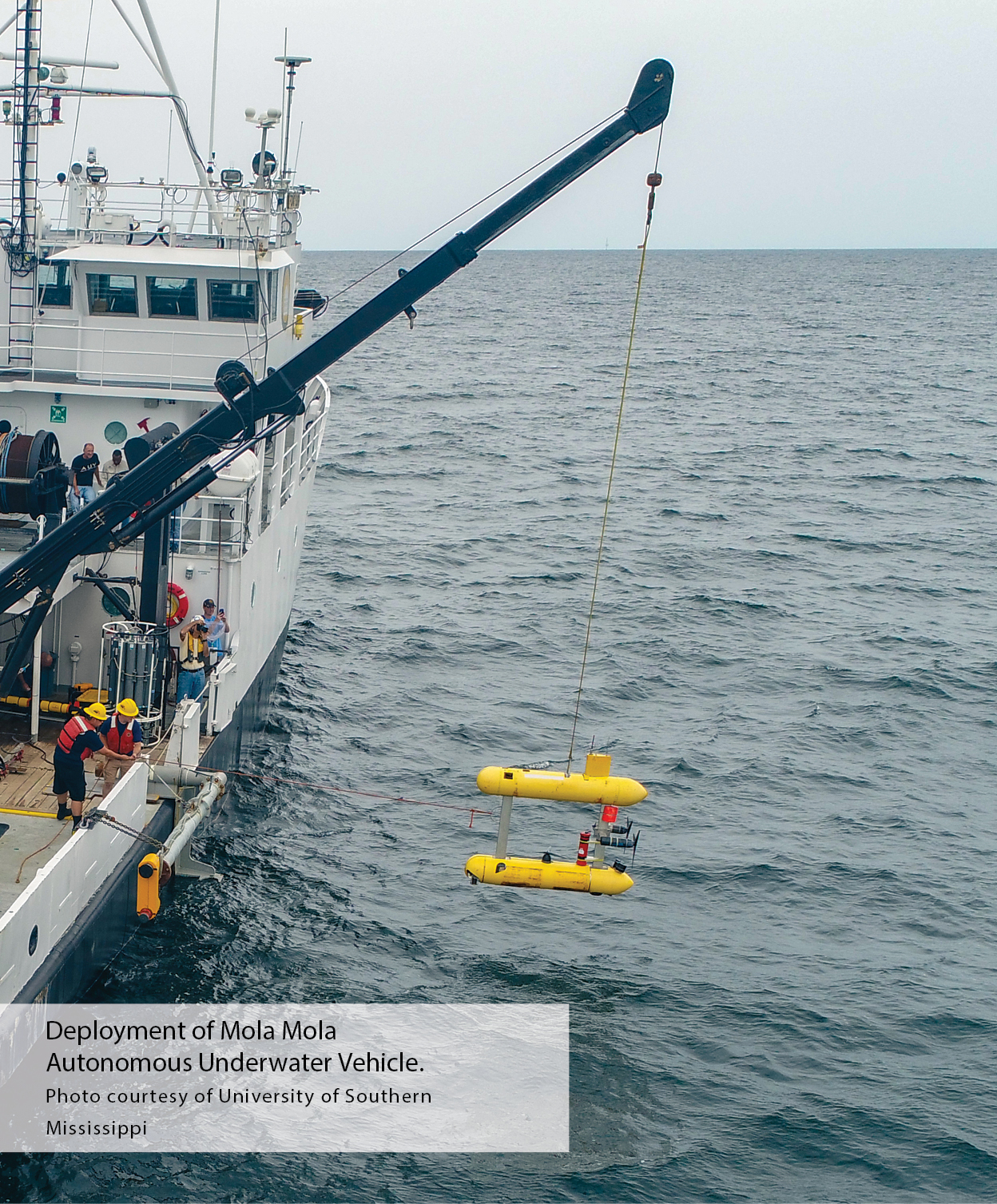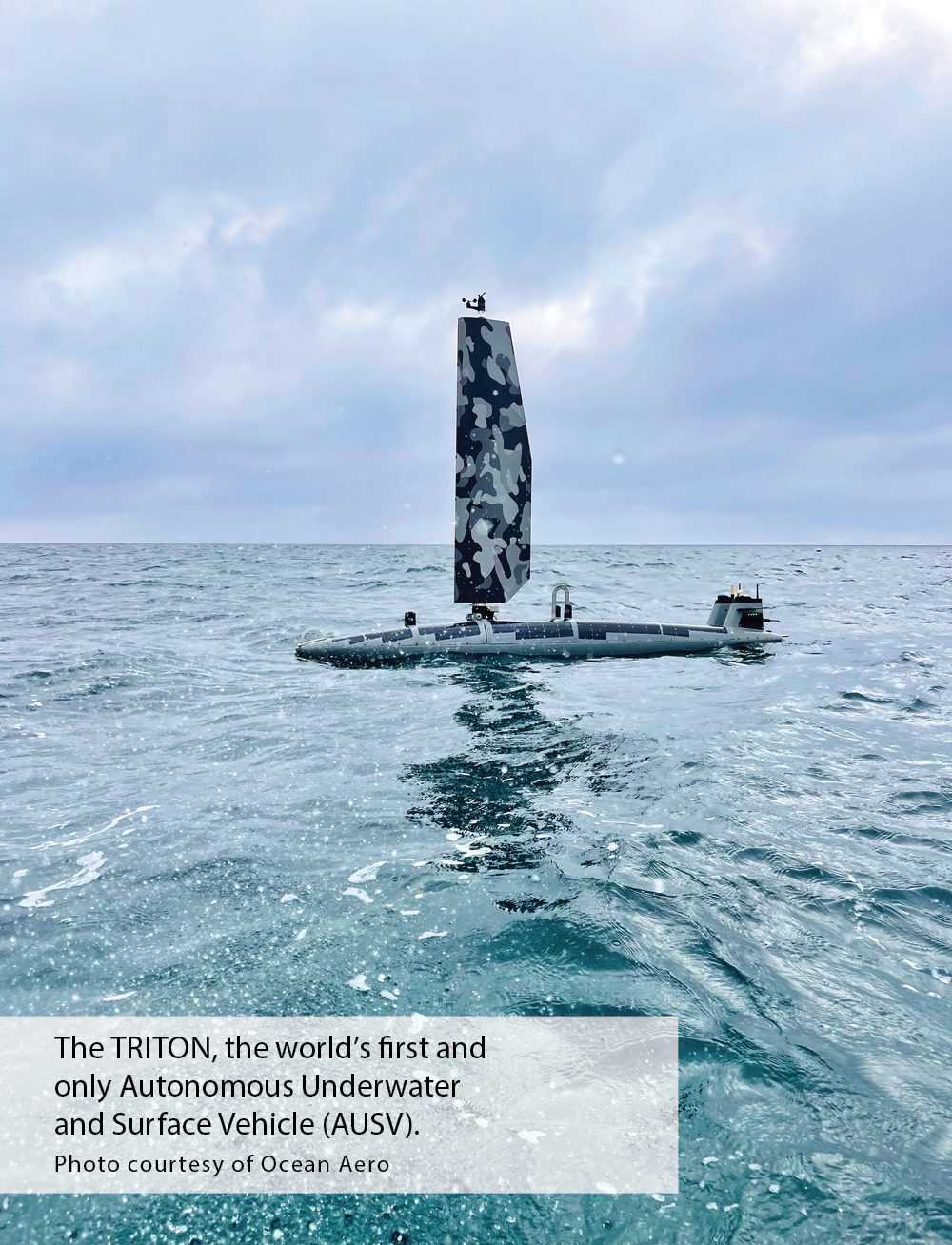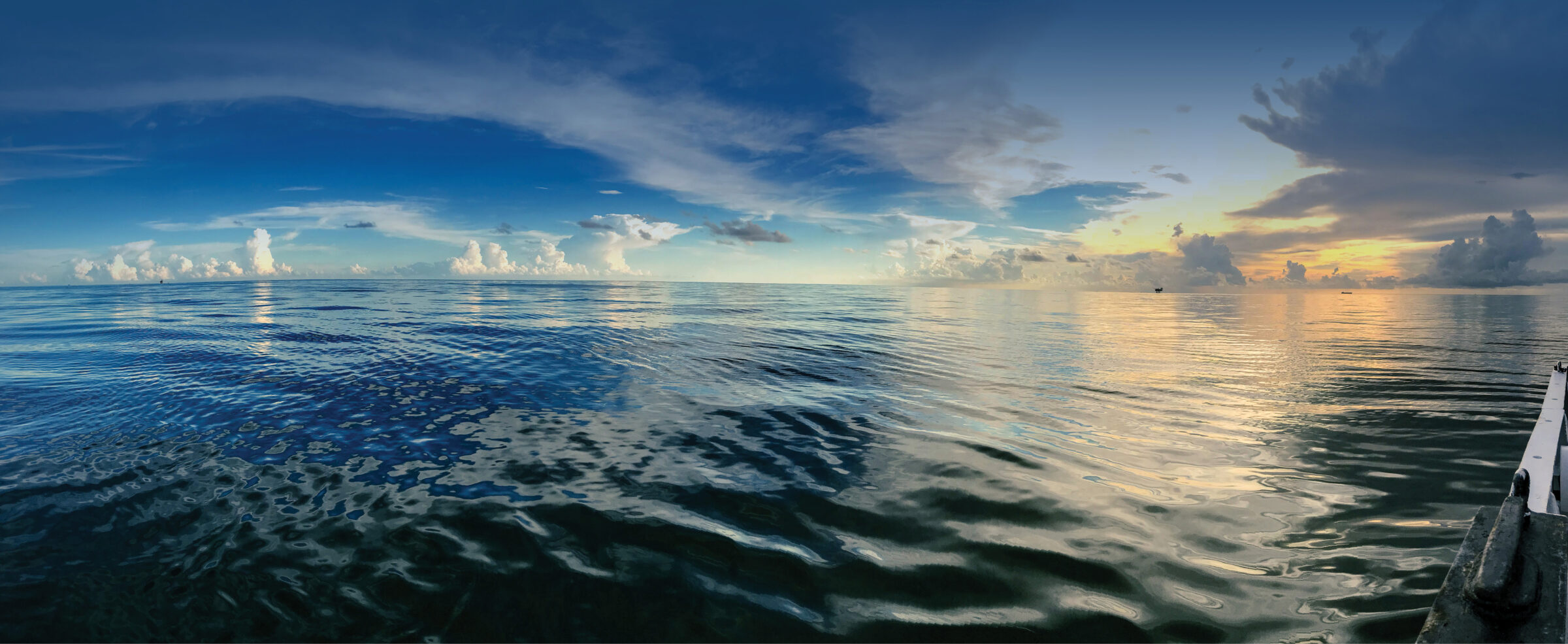From fishing to shipbuilding to blue technologies, Mississippi hosts a thriving ecosystem for ocean-affiliated industries. Known as one of the strongest blue economies in the nation, Mississippi and its sandy shores are home to more than 4,200 maritime-related companies, creating the third-highest concentration of blue economy jobs in America.
“Every day, invaluable research is conducted in the waters off of the Mississippi Gulf Coast, helping grow our blue economy while providing exciting, high-tech jobs for many in our state,” said Gov. Tate Reeves.
According to the National Oceanic and Atmospheric Administration, Coastal Mississippi annually employs 147,000 people, generating over $16 billion in gross domestic product.
“We have been blown away by the workforce quality here in Mississippi. We thought it was going to be good, and it was even better than expected. Today, 90% of Ocean Aero’s workforce is from Mississippi. Gulfport and the surrounding areas are simply a great pool of talent to choose from,” says Kevin Decker, CEO of Ocean Aero, in a company video.
After a $4.65 million investment, Ocean Aero, an innovative company that created the world’s first wind and solar-powered autonomous underwater and surface vehicle, the TRITON, moved its headquarters from San Diego to Gulfport in 2021.
“We selected Mississippi to move from San Diego because as a maritime services company it has everything we need.”
— Kevin Decker, CEO, Ocean Aero
“We selected Mississippi to move from San Diego because, as a maritime services company, it has everything we need. You know we have a great workforce, a maritime-oriented workforce, we have proximity to other firms like ours that we can partner with, we have access to academic organizations who have the willingness to do projects with us, and then above all that, you have a willing and capable political system,” said Decker.
With these advantages, Ocean Aero is continuing to grow its economic footprint. In March, Ocean Aero and Huntington Ingalls Industries, the largest military shipbuilding company in the United States and a preeminent unmanned underwater vehicle manufacturer, announced that they had entered a strategic partnership to develop unmanned maritime capabilities and autonomy software solutions.
The duo aims to enhance seabed-to-shore data transmission methods, as well as improve the operational capabilities of platforms, collaborative autonomy behaviors, perception abilities, and shared sensor fusion.
 A Pipeline for Partnerships
A Pipeline for Partnerships
As Ocean Aero can attest, one of Mississippi’s most attractive assets is its network of industry, academic and government partners. As a result of this sector’s seismic growth, the Gulf Coast has become one of the country’s largest and most diverse clusters for research programs and accelerators.
As the state’s designated marine lab and one of the largest oceanic laboratories in the southeastern United States, the University of Southern Mississippi’s (USM) Gulf Coast Research Laboratory (GCRL) spearheads numerous pathways for research and collaboration.
As a leading research center that studies marine aquaculture, sustainable fisheries, coastal ecology and restoration, and aquatic health and conservation, the GCRL is an ally to Mississippi’s blue economy in more ways than one.
In 2021, USM launched Gulf Blue, an initiative aimed at creating opportunities for Mississippi to capitalize on its geographic and maritime resources. Backed by the support of government and partner organizations, this initiative has taken the necessary steps to strengthen this sector, such as infrastructure investments, extending the GCRL’s research enterprise, and developing key academic programs.
This initiative later created the Gulf Blue Navigator program, a six-month program that allows growing startups to leverage the strengths and capabilities unique to Mississippi’s Gulf Coast. Chosen participants are provided with market access to the Gulf of Mexico region, proximity to federal agencies, technical facilities and mentorship from experts.
In October 2022, the USM Research Foundation, SeaAhead and Jackson State University selected six blue technology startups to partake in the program’s inaugural cohort: Blue Ocean Gear, SEATREC, Marauder Robotics, SeaTrac Systems, BeeX, and Safety Net Technologies. Of the six, four are U.S.-based startups headquartered in California, Georgia, and Massachusetts; the latter two originate from Singapore and the United Kingdom.
A Sea of Skilled Workers
As Mississippi’s blue economy continues to scale, the state has prioritized workforce preparation for this industry. Globally, USM is a renowned leader in uncrewed maritime systems certifications.
Furthering the opportunity that the school presents, in March, USM’s Roger F. Wicker Center for Ocean Enterprise announced four bi-monthly workforce training workshops. For a limited time, due to a $980,398 grant from AccelerateMS, the state’s leading office for workforce development strategy and delivery, qualified individuals that register for the program can participate free of charge. The pathways supported by this incentive include maritime autonomy, maritime data analytics, maritime uncrewed systems and maritime cyber.
As a collaboration with Sea Machines Robotics, the Roger F. Wicker Center introduced the Maritime Autonomy Operational Seminar. This event was the first seminar for maritime autonomy training that allowed the federal workforce to train on commercial, high-tech autonomous technologies. Through this opportunity, participants will learn how to use mission simulators, deploy and operate uncrewed systems safely and gain a general overview of maritime autonomy.
 Locally Sourced, Globally Driven
Locally Sourced, Globally Driven
After a virtual conference in 2020, the OCEANS conference and exposition is set to return to Biloxi in 2023. From September 25 to 28, over 2,000 professionals from around the world will gather at the Mississippi Coast Coliseum and Convention Center to learn and lead strategies that support the utilization and protection of our oceans.
With this year’s theme, “Blue Economy: Locally Sourced, Globally Driven,” OCEANS strives to create an interconnected web of industry leaders collaborating to create an eco-friendly future. With this mission, the organization emphasizes that “all our local efforts are integrally linked to the larger world-ocean, and we must all work toward sustainability together.”
“This is an amazing time to be located on the Mississippi Gulf Coast,” said Dr. William Burnett, director of the National Data Buoy Center. “OCEANS 2023 in Biloxi will showcase many new Blue Economy opportunities, including the Gulf Blue Initiative, the Roger F. Wicker Ocean Enterprise Facility, the U.S. Navy’s Gulf Coast Tech Bridge, the Commercial Engagement of Ocean Technologies Act capabilities between NOAA and the U.S. Navy, Ocean Aero’s new office building in Gulfport and the Uncrewed Maritime Systems Test and Training Range located in the Gulf of Mexico. As the Director of NOAA’s National Data Buoy Center, I welcome you to the area and share your excitement that the new Blue Economy presents.”

